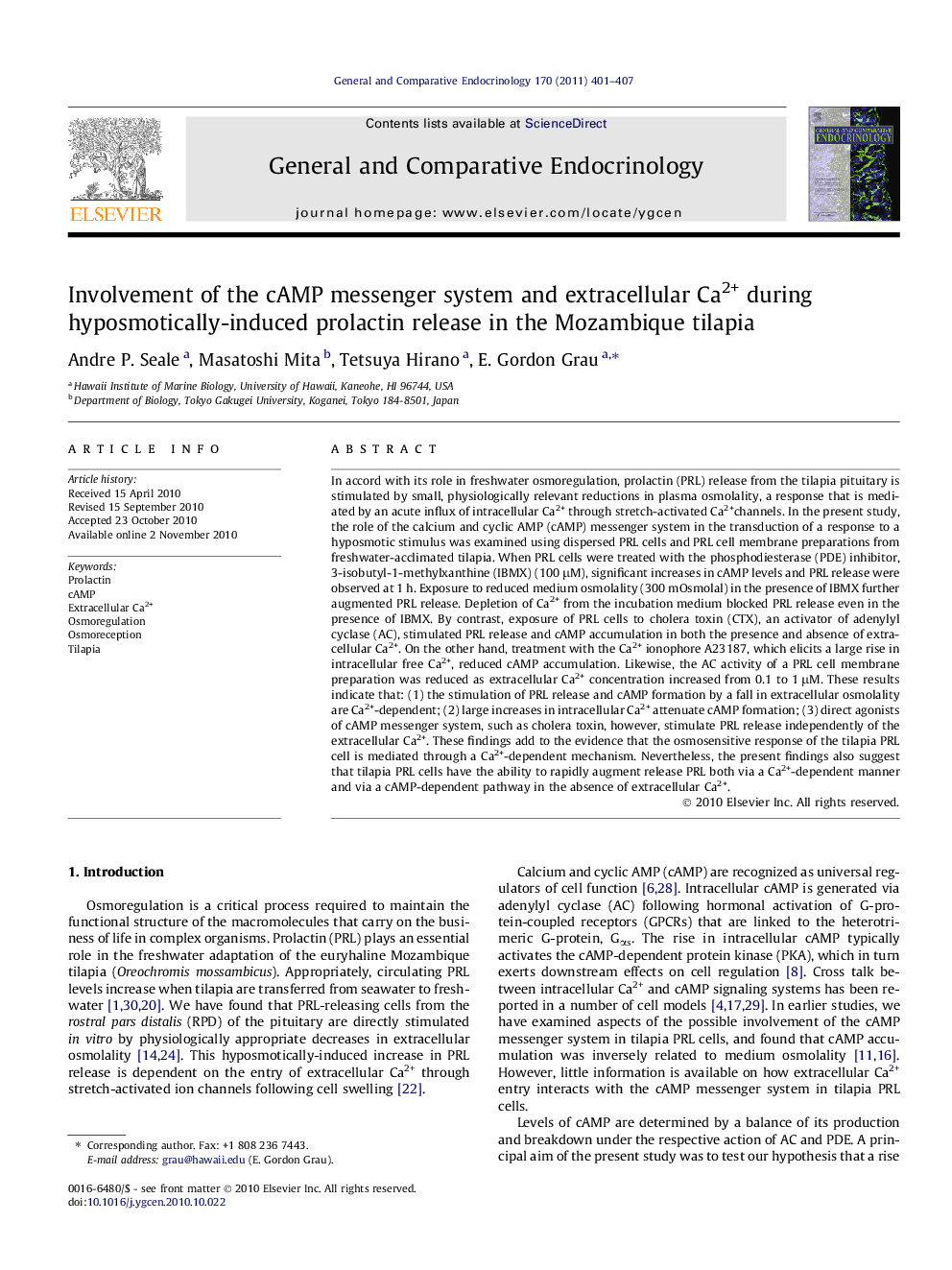| Article ID | Journal | Published Year | Pages | File Type |
|---|---|---|---|---|
| 2801080 | General and Comparative Endocrinology | 2011 | 7 Pages |
In accord with its role in freshwater osmoregulation, prolactin (PRL) release from the tilapia pituitary is stimulated by small, physiologically relevant reductions in plasma osmolality, a response that is mediated by an acute influx of intracellular Ca2+ through stretch-activated Ca2+channels. In the present study, the role of the calcium and cyclic AMP (cAMP) messenger system in the transduction of a response to a hyposmotic stimulus was examined using dispersed PRL cells and PRL cell membrane preparations from freshwater-acclimated tilapia. When PRL cells were treated with the phosphodiesterase (PDE) inhibitor, 3-isobutyl-1-methylxanthine (IBMX) (100 μM), significant increases in cAMP levels and PRL release were observed at 1 h. Exposure to reduced medium osmolality (300 mOsmolal) in the presence of IBMX further augmented PRL release. Depletion of Ca2+ from the incubation medium blocked PRL release even in the presence of IBMX. By contrast, exposure of PRL cells to cholera toxin (CTX), an activator of adenylyl cyclase (AC), stimulated PRL release and cAMP accumulation in both the presence and absence of extracellular Ca2+. On the other hand, treatment with the Ca2+ ionophore A23187, which elicits a large rise in intracellular free Ca2+, reduced cAMP accumulation. Likewise, the AC activity of a PRL cell membrane preparation was reduced as extracellular Ca2+ concentration increased from 0.1 to 1 μM. These results indicate that: (1) the stimulation of PRL release and cAMP formation by a fall in extracellular osmolality are Ca2+-dependent; (2) large increases in intracellular Ca2+ attenuate cAMP formation; (3) direct agonists of cAMP messenger system, such as cholera toxin, however, stimulate PRL release independently of the extracellular Ca2+. These findings add to the evidence that the osmosensitive response of the tilapia PRL cell is mediated through a Ca2+-dependent mechanism. Nevertheless, the present findings also suggest that tilapia PRL cells have the ability to rapidly augment release PRL both via a Ca2+-dependent manner and via a cAMP-dependent pathway in the absence of extracellular Ca2+.
Research highlights► We study the role of Ca2+ and cAMP in hyposmotically induced PRL release in tilapia. ► We culture dispersed PRL cells and measure cAMP accumulation and PRL release. ► We find that hyposmotically induced PRL release and cAMP formation are Ca2+-dependent. ► We find that cholera toxin can stimulate PRL and cAMP in the absence of Ca2+. ► We conclude that PRL can be released via a Ca2+-dependent manner and via a Ca2+-independent, cAMP-dependent pathway.
